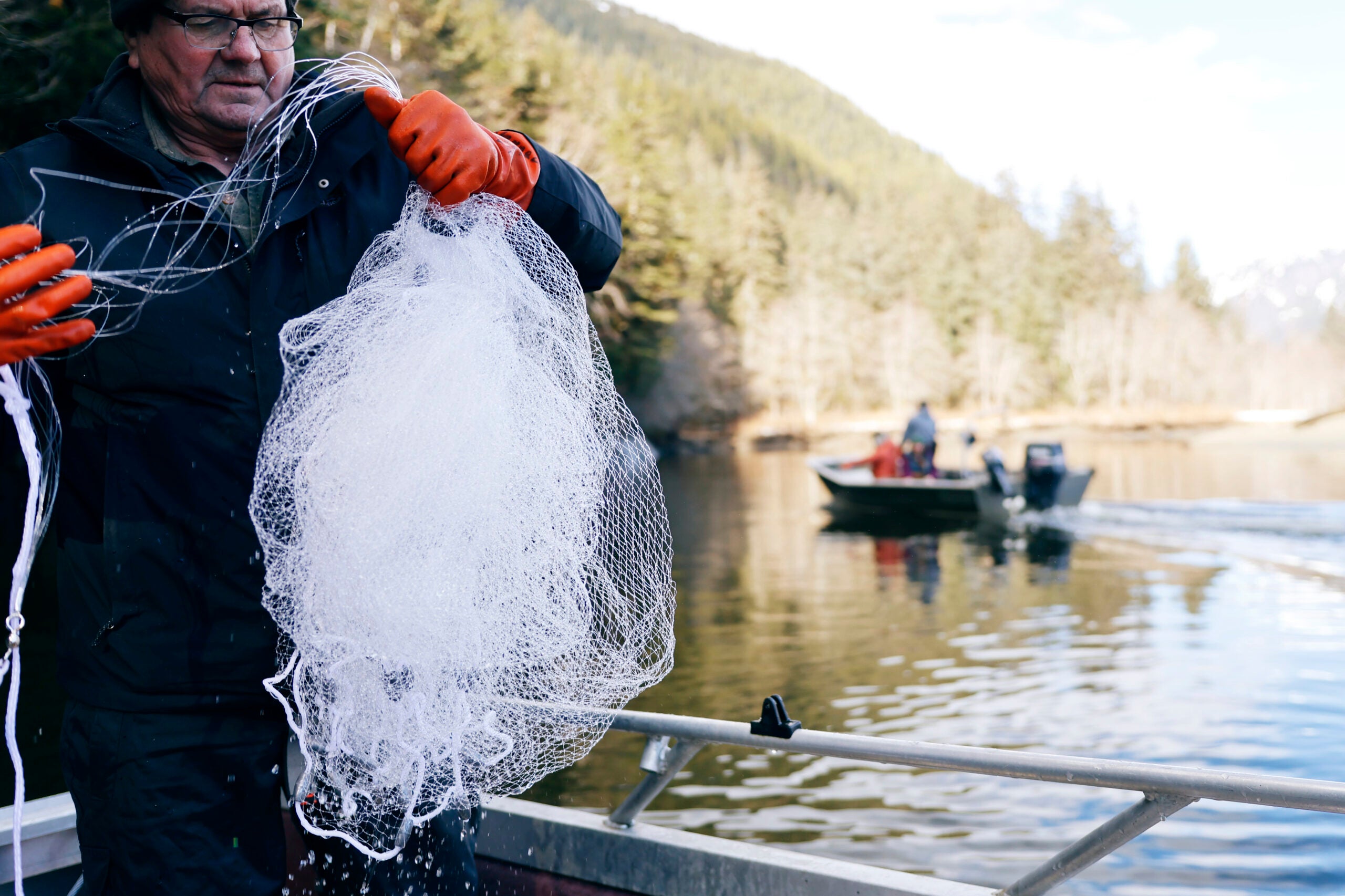Rampant Gold Mining in British Columbia Threatens Salmon and Indigenous Rights
Toxic gold mining along rivers crossing the British Columbia-Alaska border threatens critical ecosystems and the sovereign rights of Alaska Native communities.

What’s happening: Toxic gold mining along rivers crossing the British Columbia-Alaska border threatens critical ecosystems and the sovereign rights of Alaska Native communities.
At least eight proposed and operating mines threaten these transboundary watersheds — including the Eskay Creek Mine on the Unuk River. The river is home to abundant runs of salmon and eulachon, a prized fish central to Indigenous peoples’ food security, identity, and culture.
Why it matters: Gold mining, which is recklessly underregulated in Canada, produces extremely destructive waste that can poison nearby water sources. The Eskay Creek Mine — and open-pit gold-silver mine — would process up to 10,000 tons of rock each day for 13 years, dumping its tailings and acid-generating waste into natural lakes.
Southeast Alaska Native communities are among the custodians of these watersheds, which have sustained their fisheries and their cultural practices for millennia. By authorizing the mines without seeking their consent, the provincial government of British Columbia is ignoring the rights of Indigenous peoples to protect their traditional territory from toxic mining pollution.
The Eskay Creek Mine is being fast-tracked by the Environmental Assessment Office, and a final decision is expected by Wednesday, Nov. 26.
Protecting some of the world’s largest remaining fisheries and salmon runs
- Cultural resource and food supply: Fishing is vital to Tribes’ cultural practices. Salmon and eulachon (smelt) harvests also sustain Southeast Alaska Native communities throughout the year, providing food and an economic livelihood.
- Supporting biodiversity: Downstream of the current and proposed mines in the Canada-Alaska transboundary region are more than 500 miles of some of the world’s last remaining salmon rivers. They serve as corridors for Pacific salmon and support ecological niches home to grizzly and black bears, moose, and caribou.
- Contributing to Alaska’s economy: Recreational and fishing activities in these watersheds contribute millions to Alaska’s economy and to the state’s $1 billion salmon fishery and $1 billion tourism industries — as well as to the food security and livelihoods of tens of thousands of people. Unchecked mining threatens this economy with permanent pollution, for the sake of private corporate profit.
Alaska Native Tribes and First Nations have a right to say no.
- It’s the law: Canadian governments have a constitutional duty and international obligations to seek the free, prior, and informed consent of Indigenous peoples in the United States whose ancestral lands are divided by the U.S.-Canada border when projects affect their traditional lands.
- Canada and B.C. have both adopted the UN Declaration on the Rights of Indigenous Peoples, which enshrines the right to free, prior, and informed consent on development projects affecting Indigenous communities.
- Repeating a troubling history: Canada has a pattern of violating Indigenous sovereignty and Native rights to benefit extractive industries, prioritizing short-term profit gains over long-term costs to Indigenous communities and habitats.
- What Earthjustice is doing: We are representing the Southeast Alaska Indigenous Transboundary Commission (SEITC) in a case before the Inter-American Commission on Human Rights. Our clients argue that Canada and British Columbia are violating their rights by permitting these gold mines without seeking their consent.
Gold mining is dangerous, toxic, and serves only to enrich the wealthy.
- Gold mining can poison water sources: Toxic pollution from mine waste could leach into these critical transboundary waterways if poorly planned tailings dams, which hold mine waste, fail. And they often do. Even without a tailings dam failure, mines in British Columbia have a history of polluting surrounding water through acid-mine drainage.
- Mine waste contains up to three dozen dangerous chemicals, including copper and selenium, which both commonly leach out of tailings and can significantly harm and reduce salmon populations — even at very low concentrations.
- Mines are poorly regulated: Despite previous tailing mine disasters, like the 2014 Mount Polley Mine breach that spilled 6.6 million gallons of lead, arsenic, and other contaminated materials into neighboring waterbodies, these mining projects continue to use similar risky and dangerous designs.
- Enriching the wealthy: Thirty percent of world gold production in 2020 was used for jewelry, 21% for bars and coins, and 43% for exchange-traded funds or central banks. Once the gold is extracted from the land, Indigenous communities are left with the long-term social costs: Division, cultural erosion, loss of traditional lands and ways of life.
Sacrificing critical ecosystems and ways of life to make the wealthy wealthier is unacceptable. Alaska Native communities and First Nations in Canada must have a say in these risky projects.
Opened in 1978, our Alaska regional office works to safeguard public lands, waters, and wildlife from destructive oil and gas drilling, mining, and logging, and to protect the region's marine and coastal ecosystems.
The International Program partners with organizations and communities around the world to establish, strengthen, and enforce national and international legal protections for the environment and public health.
We fight to ensure our tribal and Indigenous clients’ natural and cultural resources are protected for future generations.